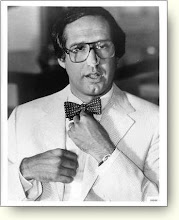
Josh Smith, known for exploiting his name as the starting point for abstract paintings, explores the ways that an object might generate images at Luhring Augustine. His objects: a crumpled oak leaf, a fish, and his previous oeuvre. Some panels are painted in mindless redundant decoration, while others turn out to be reproductions, lossy print-outs on legal-sized paper and reassembled to his consistant scale.
There are pages from his previous catalogs embedded (hinting at some of the art-career/identity content). The print-maker mentality of serial production generates issues, like commerce and artist role, to talk about. Smith contends with many ideas, but let's move the reading from within social and economic structures to a more basic language structure.
We are talking about invention here. We are looking at the thought of invention, attempting, even, to see that thought before it develops into something of its own. Smith doesn't give us a grand sense of the Source (no trace of Barnett Newman here), he gives us something less precise, less iconic and more demonstrative, than a zip. But I wouldn't mistake him for the crass slacker that a first glance suggests.
To take one angle of his work, his subject matter, we can see a development from the name paintings to these leaves and recycled pictures. He gives us a useless image, in muddy colors, with no thought to the future. The reproductions are an armature for another go at it. He works off of old ideas and empty ideas, and he appears to work mindlessly. The dumbness preserves the source, and the image never takes over. I am not talking about simply meaningless painting. I am talking about a continual reflection on the act of deciding to make a picture, never letting the picture fully develop, and capturing the moment again and again, so that it crystallizes. He chooses the easy to depict, and he works in the opposite direction from symbol–a reduction from cultural to natural. It is dumb and funny, and it is also profound.
This show comes down on March 14.









